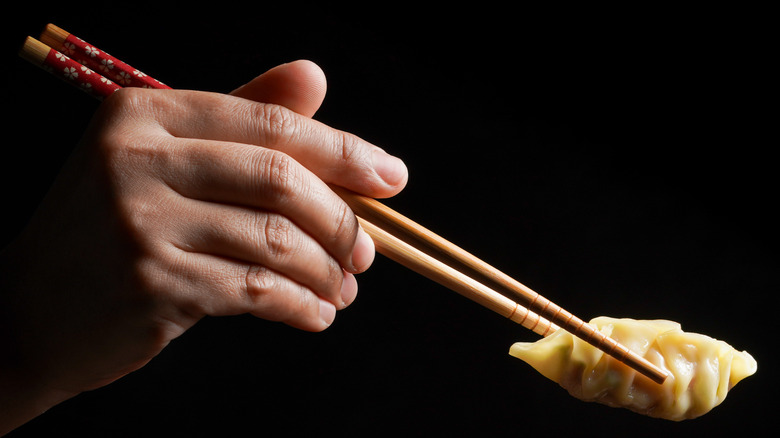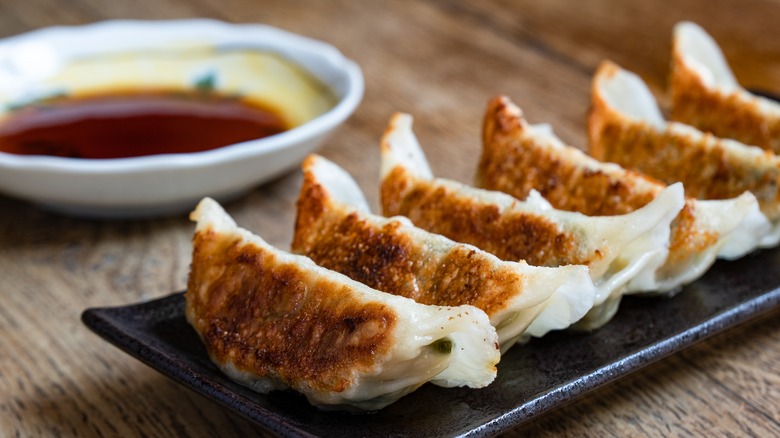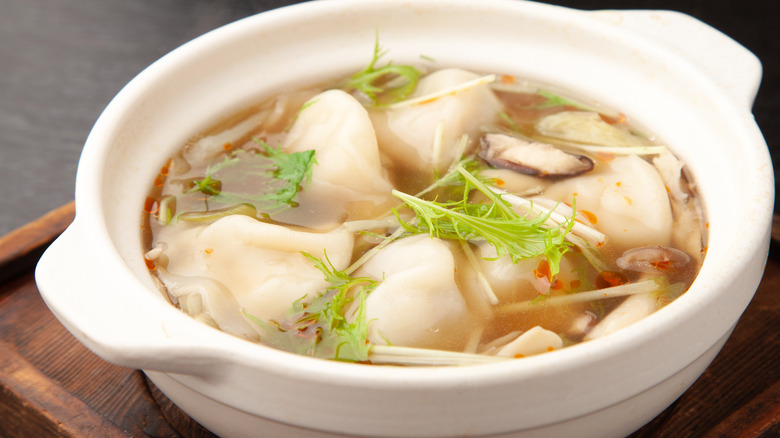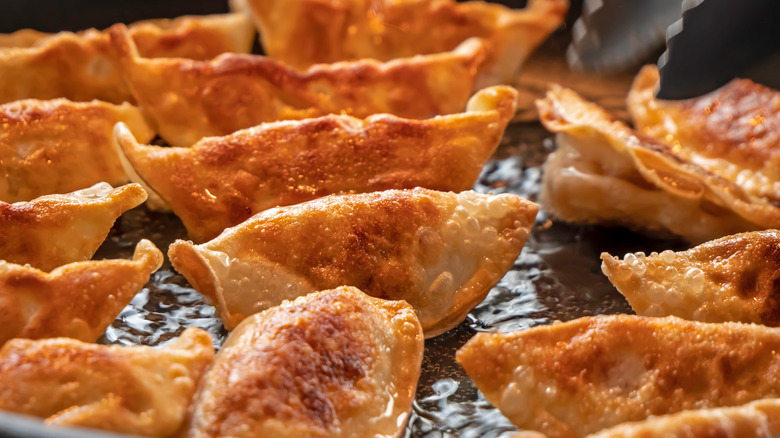3 Types Of Japanese Gyoza, Explained
Gyoza are like little stuffed pillows of savory bliss. Sold in shops around Japan, gyoza have become a favorite for residents of the island nation, but their origin is in mainland China, per Delighted Cooking. In the United States, they're commonly called potstickers. These Japanese dumplings are most often filled with a blend of ground pork and nira chives, green onions, cabbage, ginger, and garlic and served with soy sauce for dipping, according to Japan-Guide.
Perhaps part of the reason eating gyoza is so satisfying is knowing all of the hard work put into making them from scratch. Delighted Cooking says that the job of making gyoza is often taken on by a whole family to divide the tasks, from chopping the vegetables to blanching the cabbage and making the thin dough to assembling and cooking. Dumplings are formed into different shapes around the world, but gyoza are recognizable for their crescent shape (via taste atlas). According to Japan-Guide, there are three common types of gyoza, although some chefs like to get creative and put their own spin on the Japanese dish. Below, we'll run you through the three methods for cooking gyoza.
Pan-fried gyoza
Yaki gyoza uses a pan-frying method to make the dough crispy and delicious. Japan-Guide says this is the most popular method of preparing gyoza. First, the gyoza are pan-fried to form a crispy side before a blend of water and cornstarch is added to the pan and then covered to steam the dumplings for a few minutes, guaranteeing a juicier filling.
Brushing sesame oil onto the bottom of the pan before frying the dumplings in rows is recommended by Just A Pinch. Water is then added to the pan, and the dumplings are allowed to cook until the water boils away. Finally, Just A Pinch recommends drizzling a soy-based sauce onto the gyoza and cooking for an additional 20 seconds before serving. When plating, Recipe Tin Eats recommends serving them golden side or crispy, fried side up.
A fun and popular way to cook and serve Yaki gyoza is frying them so that they stick together and form one giant dumpling, which is called Hanetsuki gyoza or gyoza with wings, per Japan-Guide.
Boiled gyoza
Boiled gyoza, also called Sui gyoza, are often placed in a thin broth for serving, per Japan-Guide. This style is less common than Yaki gyoza and is often found on menus at Chinese restaurants and specialized gyoza restaurants. In fact, they are quite similar to Chinese dumplings called jiaozi (via Fun! Japan).
Winter is a popular time to enjoy Sui gyoza, per Tabemono Madness, because the dish with hot broth can be comforting on a cold day. The light broth recipe provided by Tabemono Madness includes carrots, onion, Torigara soup powder (Japanese chicken soup stock), soy sauce, sesame oil, and mushrooms. After placing the gyoza and broth into bowls, garnish it with sliced green onion and sesame seeds. The Japanese Way described Sui gyoza as tender and soft thanks to the broth. The flavors of the filling take center stage and are more pronounced with this cooking method due to the milder flavor of the dough.
Deep fried gyoza
The most uncommon of the three types of gyoza is Age gyoza, or deep fried, per Japan-Guide. Like the boiled Sui gyoza, this type is primarily sold in Chinese or gyoza specialty restaurants.
To deep fry the gyoza, Chopstick Chronicles advises placing a few pieces in a frying pan with hot vegetable oil. Once the gyoza becomes golden brown, remove them from the pan and place them on a wire rack with a paper tower spread to remove excess oil from the dumplings. To serve the finished Age gyoza, Chopstick Chronicles recommends placing sliced lemon on the plate. The Japanese Way cautions that they can be very hot when biting into, so be cautious with freshly-fried gyoza.
Age gyoza, like Sui gyoza and Yaki gyoza, are served with a soy and vinegar dipping sauce that sometimes has a little chili oil added to it, according to Japan-Guide.



